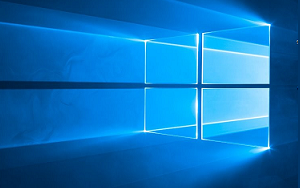Restoring Google Chrome to its default settings can resolve various issues such as slow performance, unexpected behavior, or unwanted changes due to extensions. This guide provides detailed steps to reset Chrome settings while preserving your data.
Introduction
Google Chrome is one of the most popular web browsers, known for its speed, efficiency, and user-friendly interface. However, over time, users might experience issues like sluggish performance, unexpected crashes, or unwanted changes in settings. Resetting Chrome to its default settings can often resolve these problems. This article will guide you through the steps to reset Google Chrome settings while preserving your bookmarks, history, and saved passwords.
Why Reset Chrome Settings?
- Resolve Performance Issues: Over time, Chrome may become slow due to accumulated cache, cookies, and extensions.
- Remove Unwanted Changes: Some extensions or programs might alter your settings without permission.
- Fix Unusual Behavior: If Chrome is crashing or behaving unexpectedly, a reset might be necessary.
What Happens When You Reset Chrome?
Resetting Chrome settings will:
- Restore the default search engine and homepage.
- Disable all extensions and clear temporary data, such as cookies.
- Preserve your bookmarks, history, and saved passwords.
Step-by-Step Guide to Reset Chrome Settings
Follow these steps to reset your Chrome settings:
1. Open Chrome Settings
- Open Google Chrome on your computer.
- Click on the three vertical dots in the upper-right corner of the window to open the menu.
- Select Settings from the dropdown menu.
2. Access Advanced Settings
- Scroll to the bottom of the Settings page and click on Advanced to expand additional options.
3. Reset and Clean Up
- Scroll down to the Reset and clean up section.
- Click on Restore settings to their original defaults.
4. Confirm Reset
- A confirmation dialog will appear. Read the information carefully.
- Click Reset settings to confirm. This will reset your Chrome settings to default.
Alternative Methods to Reset Chrome
If the above method does not work, try the following alternatives:
Reset Chrome Using Chrome Cleanup Tool
- In the Chrome Settings, navigate to Reset and clean up.
- Click on Clean up computer.
- Click Find to scan for malicious software and remove it if detected.
Reset Chrome Manually
For a more manual approach:
- Navigate to the Chrome User Data folder on your computer. The location varies by operating system:
- Windows:
C:\Users\YourUsername\AppData\Local\Google\Chrome\User Data - macOS:
/Users/YourUsername/Library/Application Support/Google/Chrome - Linux:
/home/YourUsername/.config/google-chrome/
- Windows:
- Locate the Default folder and rename it to BackupDefault to preserve your data.
- Restart Chrome to create a new Default folder.
Troubleshooting Common Issues After Reset
If you encounter issues after resetting Chrome, consider the following troubleshooting steps:
Re-enable Essential Extensions
After resetting, all extensions are disabled. Re-enable only essential extensions by navigating to Settings > Extensions and toggling the switch next to the desired extension.
Reconfigure Settings
Manually reconfigure settings such as your homepage, search engine, and other preferences that were restored to default.
Update Drivers and Software
Ensure your operating system, browser, and drivers are up to date to prevent compatibility issues.
Conclusion
Resetting Chrome settings is a straightforward process that can resolve various issues related to browser performance and unwanted changes. By following the detailed steps outlined in this guide, you can ensure a smooth reset process while safeguarding your important data like bookmarks and passwords. Regular maintenance, such as clearing cache and updating extensions, can help maintain optimal browser performance. With these tools and techniques, you can enjoy a fast and efficient browsing experience.







